Features of pruning columnar apple trees in autumn
Establishing an orchard using dwarf and columnar crops allows gardeners to save space on the site, but at the same time harvest an excellent harvest. Caring for columnar apple trees includes pruning according to the basic scheme, which is carried out in autumn or spring. The event requires special care, since damage to the apical kidney should not be allowed. To avoid common mistakes, it is worth stocking up on certain knowledge.
Features of the tree
Not every gardener can plant a classic apple tree on the site, because usually the tree occupies a large area and has low self-fertility. To achieve fruiting, you will have to plant at least two copies, but the modern garden plot is too small for this.
In the 80s of the last century, Canadian fruit growers noted a natural mutation: one of the old trees of the Macintosh variety formed an unusual shoot, dotted with ringlets, but devoid of second-order shoots. The results of the study of spontaneous mutation formed the basis of a new culture - the columnar apple tree.
Columnar trees are characterized by the following parameters:
- height up to 2 m;
- thickened stem;
- shortened thick branches with short internodes;
- compact dimensions;
- early entry into the season of fruiting (1–2 years from planting);
- the formation of ovaries on shortened ringlets and directly on the trunk;
- superficial root system;
- average frost resistance;
- high productivity - from one "column" you can collect up to 15 kg of selected apples, the quality of which is not inferior to ordinary varieties;
- unpretentious care;
- decorative qualities.
Thanks to the parameters described above, the columnar apple tree is indispensable for creating a small garden, landscape design. The compact crown allows you to grow several varieties of apples with different characteristics and ripening times even in a small area. Small dimensions make harvesting and crown processing much easier. Such a tree is ideal for beginners, because the "column" is quite easy to care for.
Among the shortcomings of the culture, there is a short growing season - after 10-15 years the apple tree will have to be replaced. Columnar apple trees are less resistant to cold weather, more demanding on moisture and nutrition due to biological characteristics and superficial location of the root system. Many gardeners consider the high price of seedlings to be unjustified.
Advice
Don't fall for the tricks of the salespeople. The statement about the dwarf nature of growth is not always true. If instead of a low-growing stock, a tall one is used, the height of the tree can reach 4-6 m.
Pruning goals
The biological features of the tree include the presence of a special apical bud on the trunk. Damage to this part of the culture is unacceptable! Therefore, the pruning scheme used for ordinary apple trees is not suitable for columnar.
With the natural development of the tree, excluding the intervention of the gardener, in columnar crops the side shoots will be short, and the crown will be compact. The apical bud is responsible for this form of growth. When this part of the stem is damaged, the violent development of lateral shoots is activated - many long branches grow. Beginners often cut off the top of the stem with the apical bud out of ignorance, sometimes the tops of the shoots freeze out.
Pruning columnar apple trees has the following goals.
- Strengthening young shoots by removing excess growth.Too many branches will be difficult for a tree to "feed", so some of the growth will inevitably have to be cut.
- Crown sanitation - pruning diseased and damaged branches to maintain tree health.
- Formation of fruit links to increase productivity.
- Rejuvenation - removal of old branches to stimulate the growth of young shoots.
- Thinning the crown. Columnar varieties tend to form a large number of branches. If they are not removed, ventilation and illumination of the crown will deteriorate, which will lead to the occurrence of diseases, a decrease in productivity, and the quality of the crop.
- Increasing decorativeness - thanks to pruning, the compact dimensions of the tree can be maintained.
Whether pruning is necessary, the gardener decides for himself. If you do not want to interfere with the natural development of the trees, you will need a minimum of pruning, which includes the restoration of the crown. If, for some reason, the crown kidney is damaged, this event cannot be dispensed with.
Timing of trimming
The optimal time to prune columnar trees is determined by the variety and growing region. There are empirically verified deadlines for each event.
Winter works
Pruning is called winter pruning at the end of the cold season, before sap flow is activated. In mid-season and late cultivars of columnar apple trees, the crown is sanitized during this period. In regions with harsh climatic conditions in winter or early spring, it is customary to cut the crop according to the basic scheme.
Advice
In the South of Russia, it is better to postpone the event until the fall, since the spring is swift and hot here, the time before the buds open will be shorter.
Spring and summer pruning
In spring, after flowering, it is convenient to check the apical bud for damage. When the growth point freezes out, gardeners have to select one of the replacement shoots to form a new conductor. For this, a well-developed branch of the vertical type of growth is chosen, located as close as possible to the trunk. The rest of the competing shoots must be removed on the ring. In the spring, they also sanitize the crown by cutting out the frozen tips of the branches.
Summer pruning involves removing excess growth. The tree tends to form a large number of branches directly on the trunk. In spring, such tiny green shoots look like fruit twigs, but after the appearance of the ovaries, the "dummy" is easier to distinguish. They are cut out so that the tree does not feed extra shoots, but puts its energy into the formation of juicy fruits and the laying of buds for the next season.
Important!
Green shoots are not cut with pruners, but plucked out by hand. The procedure is carried out with great care, trying not to damage the bark. It is easier for a tree to tighten a few large cuts than a lot of small bark damage. Remember that open wounds are the gateway for infections.
Autumn activities
In areas with a harsh climate, in the fall, the crown of columnar apple trees is sanitized, trying not to remove many shoots at a time. Pruning is carried out in early autumn, so that the wounds can heal before the onset of frost.
Subject to removal:
- broken twigs;
- shoots affected by fungi or pests;
- shoots left after summer pinching (plucking is not always effective, by autumn a large number of green shoots can grow again from dormant buds);
- branches thickening the crown, crossing with neighboring trees.
Autumn pruning in warm climates is performed according to the basic scheme, which you will learn about below.
The scheme of the formation of fruit links
In order not to damage the tree and achieve maximum efficiency from the event, the fruit growers developed a special scheme for pruning a columnar apple tree, based on the peculiarities of the development of the culture.
Gardeners noted that branches growing in the vertical direction relative to the stem tend to form powerful growths.Horizontal shoots grow much more slowly, but form many fruit buds. Such observations became the foundation for the creation of a basic scheme for pruning columnar trees.
Trimming is done as follows.
- In the fall of the year of planting or the next spring, all lateral growth on the stem is cut to the level of two viable buds.
- In the next growing season, two shoots will appear from the buds remaining on the branches. To form the fruit link, a horizontal branch is chosen, and the vertical one is cut off again, leaving only two buds.
- After a year, the fruiting branch of horizontal growth is completely cut off. From the two shoots cut off last season, the branches again form a fruit link, as described above.
- In the fourth year of the growing season, the formation of the fruit link is repeated.
- A year later, the branch is removed at the junction with the stem. After rejuvenation, a well-developed shoot is again selected to form a new fruit link.
The described technique allows you to get maximum productivity from the columnar apple tree, to stimulate the development of annelids.
Advice
In addition to the basic scheme, sanitary and maintenance pruning is mandatory. The latter provides for maintaining the balance of branches so as not to lead the tree to exhaustion.
How to avoid mistakes?
Violation of the pruning technology will certainly damage the health of the tree. To avoid common mistakes, we advise you to follow the rules listed below.
- The whole tools for cutting must be well sharpened. It must be disinfected before and after the procedure. You can withstand cutting elements in a strong solution of potassium permanganate or wipe with alcohol, ignite, treat with bleach.
- Be sure to heal large wood wounds with garden varnish or natural paint. Such a measure will protect the slices from the penetration of fungi and infections.
- When cutting, step back 2 cm from the second shoot bud. Cutting is carried out in the direction opposite to the first kidney.
- When pruning branches, be careful not to damage the bark or make too deep cuts.
Compliance with the rules and terms for pruning columnar apple trees allows you to achieve maximum productivity from the culture, even in harsh climates. The above scheme for the formation of fruit links will help beginners to correctly perform the procedure, for which the tree will generously thank the harvest.
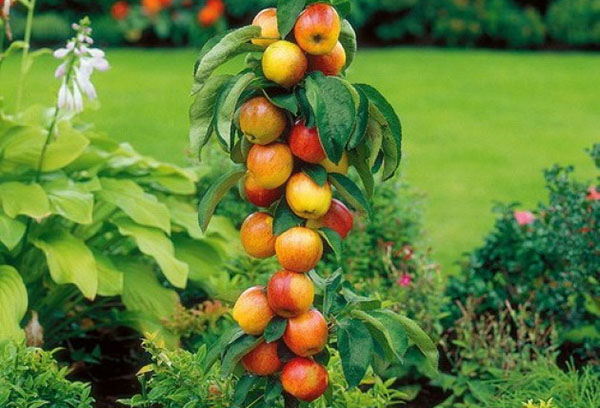
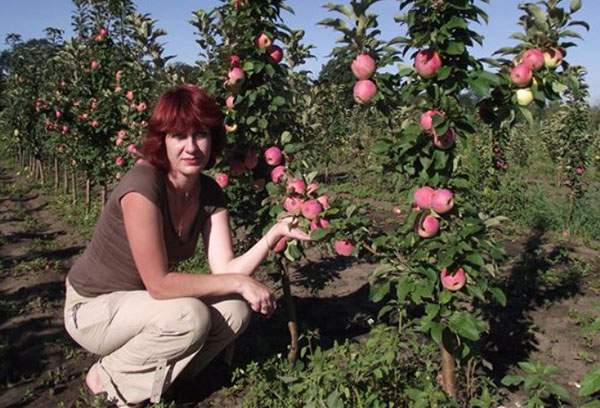
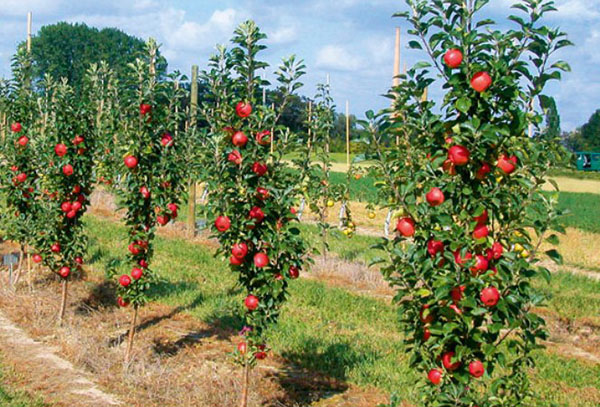

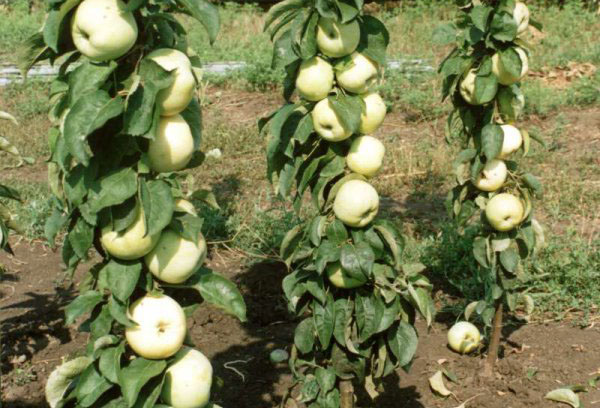
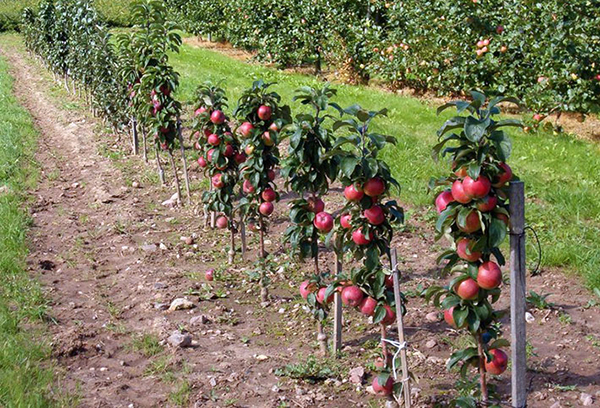
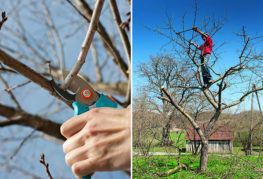
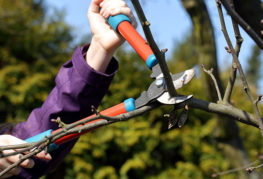
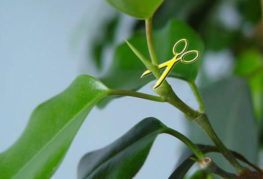
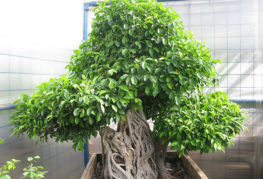
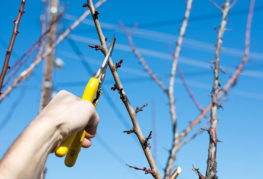

and will be published shortly.